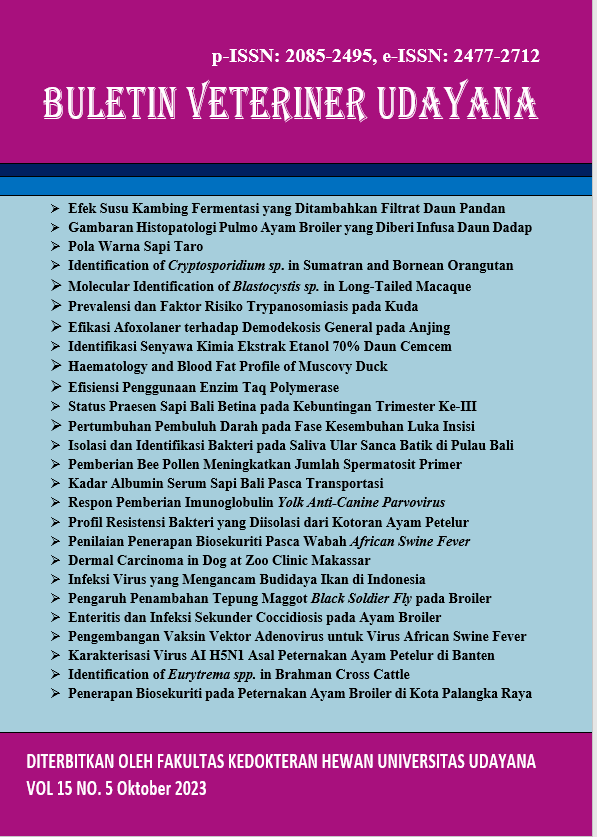THE PERCEPTION OF VETERINARIANS IN BALI TOWARDS ANTIMICROBIAL RESISTANCE
Abstract
Antimicrobial resistance (AMR) is a global crisis that will greatly impact human and animal health. This phenomenon is mostly caused by veterinarians who use antimicrobial to their patient irresponsibly. This study aims to know how the perception of veterinarians toward AMR phenomena in Bali. As many as 204 clinical practitioner veterinarians who were officially registered in the province of Bali divided into two group namely pet and livestock veterinarians. Both of groups were asked to answer a Likert-type scale questionnaire. The Kruskal-Wallis H test was performed to determine significant differences in median responses and mean ratings between different veterinary groups for each question. Both of groups strongly agreed with the factor of patients did not finish antimicrobials therapy and using antimicrobials from previously unfinished therapy greatly contributed to the problem of AMR. Vet clinic, human clinic, human hospitals, livestock, aquaculture, and irregular use of antimicrobials contribute greatly to AMR. Patient health in a general hospital, the general public, livestock and food industry from animals are considered quite problematic due to AMR phenomenon. The role of many parties seems very important in managing and preventing AMR from both veterinarian groups. Our finding provided valuable insight into the awareness of AMR on Bali veterinarian and have important implication for the future studies.
Downloads
References
Founou RC, Founou LL, Essack SY. 2017. Clinical and economic impact of antibiotikaresistance in developing countries: a systematic review and meta-analysis. PLoS One. 12: e0189621.
Economou V, Gousia P. 2015. Agriculture and food animals as a source of antimicrobial-resistant bacteria. Infect. Drug Resist. 8: 49–61.
Garcia PR, Appleby MC, Manteca X, Scott-Park F, Smith C, Velarde A. 2016. One welfare: a platform for improving human and animal welfare. Vet. Rec. 179: 412–413.
Norris JM, Zhuo A, Govendir M, Rowbotham SJ, Labbate M, Degeling C, Gilbert GL, Dominey-Howes D, Wardet MP. 2019. Correction: Factors influencing the behaviour and perceptions of Australian veterinarians towards antibiotikause and antimicrobial resistance. PLoS One. 14(10): e0224844.
Shrestha P, Cooper BS, Coast J. 2018. Enumerating the economic cost of antimicrobial resistance per antibiotikaconsumed to inform the evaluation of interventions affecting their use. Antimicrob. Resist. Infect. Control. 17(1): 98.
Vale AP, Cousins C, Tzora A, McCarron MT, Green A, Molloy s, Bainbridge J, Leonard F. 2020. Molecular characterization of fecal escherichia coli isolated from zoo animals. J. Zoo Wild. Med. 50: 813–821.





